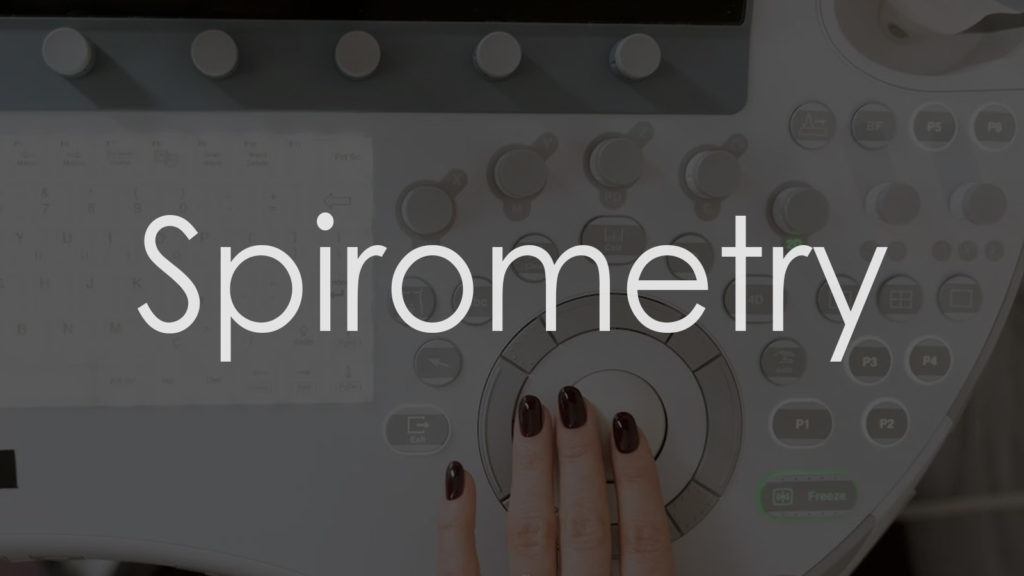Spirometry is a common pulmonary function test that measures how much air you can inhale and exhale, and how quickly you can exhale. It is a critical tool for diagnosing and monitoring respiratory conditions, such as asthma, chronic obstructive pulmonary disease (COPD), and other disorders affecting lung function. This article will explore the purpose of spirometry, the procedure for conducting it, the interpretation of results, and important considerations when undergoing this test.

Why is it needed?
Spirometry is necessary for several key reasons:
- Diagnosing Respiratory Conditions: It helps identify conditions like asthma, COPD, restrictive lung disease, and other disorders affecting lung function.
- Monitoring Disease Progression: Regular spirometry tests can monitor the progression of lung diseases and the effectiveness of treatment.
- Evaluating Symptoms: It is used to investigate symptoms such as shortness of breath, wheezing, chronic cough, and reduced exercise tolerance.
- Assessing Lung Function: It provides an objective measurement of lung function in patients with known respiratory conditions.
- Preoperative Assessment: Evaluates lung function before surgery, especially in patients with a history of respiratory issues.
Procedure for taking the test
The procedure for conducting spirometry involves several steps:
Preparation
- Clothing: Wear loose, comfortable clothing that does not restrict breathing.
- Medications: Follow your healthcare provider’s instructions regarding the use of inhalers or other medications before the test.
- Avoid Heavy Meals: Do not eat a large meal before the test, as it can affect breathing performance.
- No Smoking or Vigorous Exercise: Avoid smoking and strenuous exercise for at least a few hours before the test.
Conducting the Test
- Positioning: The patient sits upright in a chair, with feet flat on the floor and legs uncrossed.
- Nose Clip: A nose clip may be used to prevent air from escaping through the nose.
- Mouthpiece: The patient places their mouth around the spirometer mouthpiece, ensuring a tight seal.
- Instructions: The technician provides clear instructions on how to perform the breathing maneuvers. Typically, the patient will be asked to take a deep breath in and then exhale as forcefully and quickly as possible.
- Repetitions: The test is usually repeated several times (typically three) to ensure consistency and accuracy. The best result out of these attempts is used for analysis.
- Duration: The entire procedure typically takes about 15-30 minutes.
Decoding the results
Interpreting spirometry results involves analyzing various parameters that reflect lung function. Here are the key measurements and what they signify:
Forced Vital Capacity (FVC)
- Description: The total amount of air that can be forcefully exhaled after taking a deep breath.
- Normal Range: Varies based on age, gender, height, and ethnicity.
- Abnormal: Reduced FVC can indicate restrictive lung disease or severe obstructive lung disease.
Forced Expiratory Volume in 1 Second (FEV1)
- Description: The amount of air that can be forcefully exhaled in the first second of the FVC maneuver.
- Normal Range: Varies based on age, gender, height, and ethnicity.
- Abnormal: Reduced FEV1 can indicate obstructive lung disease, such as asthma or COPD.
FEV1/FVC Ratio
- Description: The percentage of the FVC that is exhaled in the first second.
- Normal Range: Typically 70-80% in healthy adults.
- Abnormal: A reduced ratio (<70%) indicates obstructive lung disease. A normal or high ratio with reduced FVC suggests restrictive lung disease.
Peak Expiratory Flow (PEF)
- Description: The highest flow rate achieved during the FVC maneuver.
- Normal Range: Varies based on age, gender, height, and ethnicity.
- Abnormal: Reduced PEF can indicate obstructive lung disease or poor effort during the test.
Important Considerations
When undergoing spirometry, several factors should be taken into account:
- Effort and Technique: The accuracy of spirometry results depends on the patient’s effort and the proper technique during the test. Follow the technician’s instructions carefully.
- Reversibility Testing: In some cases, the test may be repeated after administering a bronchodilator to assess the reversibility of airway obstruction. Significant improvement in FEV1 or FVC suggests conditions like asthma.
- Baseline Variability: Results can vary depending on factors like recent illness, smoking, or environmental exposure. Consistent testing conditions are important for accurate monitoring over time.
- Normal Variability: Spirometry values can fluctuate naturally, so small changes may not always indicate a clinical issue. The overall trend and clinical context are crucial.
- Contraindications: Spirometry may not be suitable for individuals with certain conditions, such as recent surgery, uncontrolled hypertension, or acute respiratory distress.
Conclusion
Spirometry is a vital diagnostic tool that provides essential information about lung function. It is non-invasive, quick, and widely accessible, making it an essential procedure in modern respiratory care. Understanding the purpose of the test, the procedure involved, and the interpretation of results can help patients better prepare for the examination and understand the findings. Regular spirometry, particularly for individuals with respiratory conditions or symptoms, can significantly aid in early diagnosis and effective management of various lung diseases.